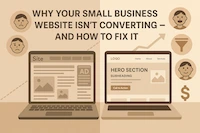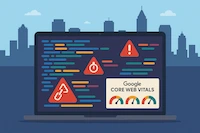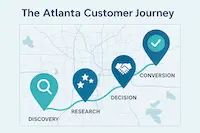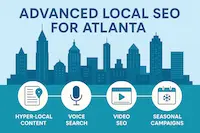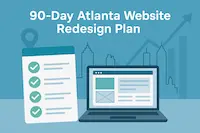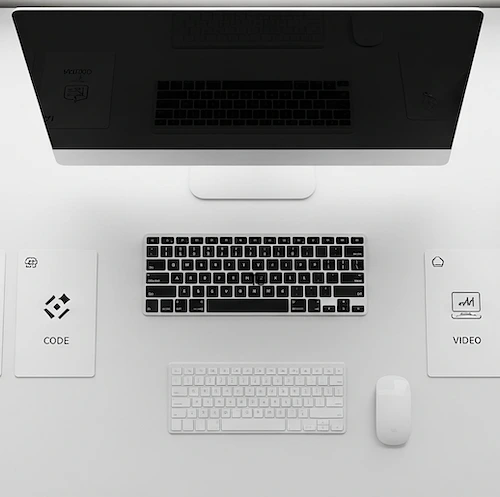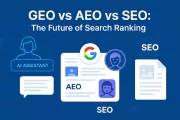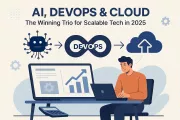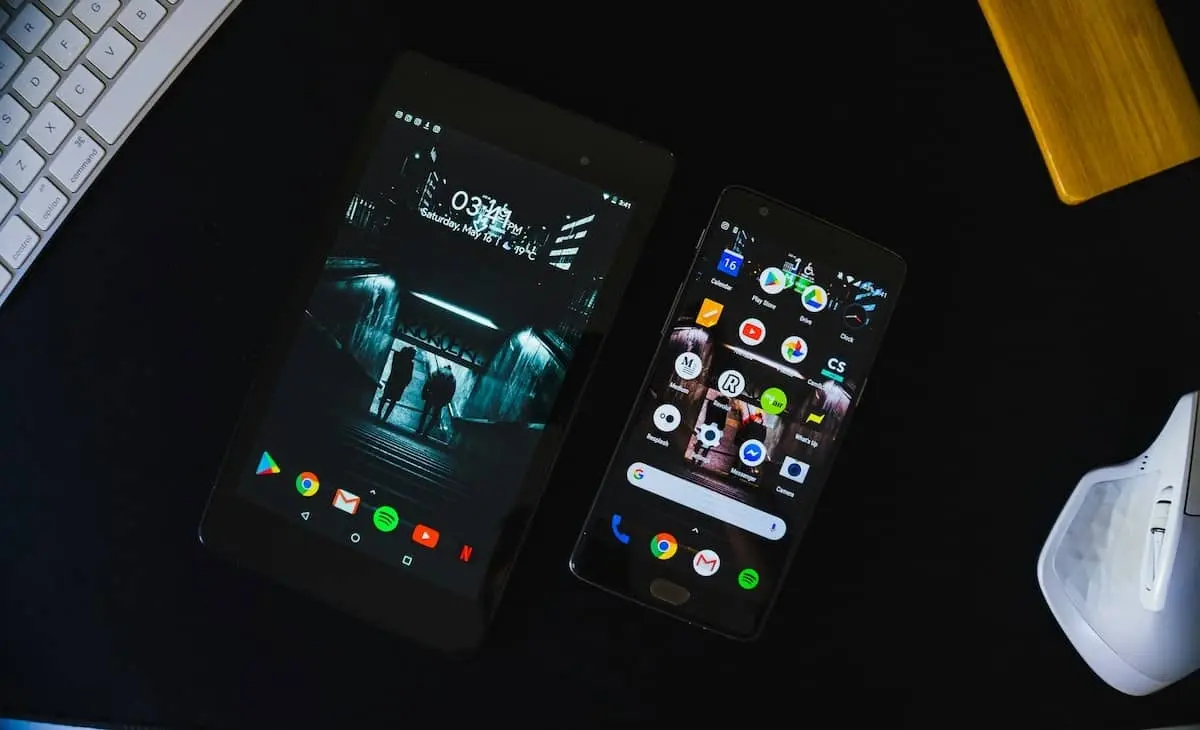
Top 10 Mistakes Businesses Make When Developing a Mobile App (and How to Avoid Them!) | TiltStack
Top 10 Mistakes Businesses Make When Developing a Mobile App (and How to Avoid Them!)
Thinking of building a mobile app for your business? It's a powerful move in today's digital landscape. But the path from idea to a successful, engaging app is filled with potential pitfalls. A poorly planned or executed app can quickly become another entry in the "app graveyard"—wasting months of time, thousands in budget, and failing to deliver any meaningful results.
At TiltStack, we’ve helped numerous businesses not only launch but successfully scale high-performing mobile apps. We've seen where projects go wrong—and more importantly, how to build them right from the start. Here are the top 10 mistakes we see time and again, with our expert advice on how to sidestep each.
1. Lack of a Clear Strategy Before Coding
The Mistake: Jumping Straight to Development
This is the most common and costly error. Many businesses are so excited about their app idea that they rush into coding without a clear strategy. They fail to define the core problem the app solves, identify the target user, analyze the market competition, or establish clear success criteria (KPIs). This approach is a recipe for budget overruns, feature bloat, and an app that nobody needs.
The Fix: A Strategy-First Discovery Process
Before a single line of code is written, a thorough discovery and strategy phase is non-negotiable. At TiltStack, our Digital Strategy & Consulting process helps you validate your concept and build a solid foundation by:
- Defining and validating your Minimum Viable Product (MVP).
- Conducting user persona and market research.
- Creating a feature roadmap that aligns with real business goals, not just ideas.
- Establishing clear metrics for success from day one.
2. Ignoring User Experience (UX) Design
The Mistake: Confusing UI with UX
Some businesses focus on making the app look pretty (User Interface or UI) while neglecting how it feels to use (User Experience or UX). You don't get a second chance at a first impression. If users find your app clunky, confusing, or frustrating, they will abandon it—fast. In fact, studies show that a poor user experience is a primary reason why nearly 25% of users abandon an app after just one use.
The Fix: Invest in Professional UX/UI Design Early
Great UX isn't an expense; it's an investment in user retention. We create intuitive user flows, clear navigation, and interactive wireframes that are rigorously tested before development begins. This ensures the final product is not only beautiful but also a delight to use.
See our Web & App Design Process
3. Feature Overload in the MVP
The Mistake: Trying to Build Everything at Once
It's tempting to want your app to launch with every feature you've ever dreamed of. However, this "kitchen sink" approach dilutes your app's core value, makes the user experience confusing, and dramatically increases initial development time and cost.
The Fix: Prioritize Ruthlessly and Focus on the Core Loop
A successful MVP focuses on solving one primary problem exceptionally well.
- TiltStack's Strategy: We help you prioritize the 2–3 core features that deliver the most value to your target user. Everything else goes into the post-launch roadmap. Launch lean, gather real user feedback, and then build what your users actually want.
4. Poor Performance on Mobile Devices
The Mistake: Treating a Mobile App Like a Website
Mobile-first doesn’t just mean making it responsive. Native and cross-platform apps have their own unique performance considerations. A common mistake is porting web logic directly to a mobile app without optimizing for touch interactions, varying screen sizes, device memory constraints, and offline functionality.
The Fix: Build with a Mobile-First Mindset
Our developers write lean, efficient, mobile-native code that performs fast and scales cleanly. We focus on:
- Optimizing load times and perceived performance.
- Ensuring smooth, intuitive touch gestures.
- Managing memory and battery usage effectively.
- Implementing graceful offline handling where applicable.
5. Skimping on Quality Assurance (QA) Testing
The Mistake: Letting Your Users Be Your Beta Testers
An app that crashes, freezes, or behaves unpredictably will quickly lose user trust and earn negative app store reviews. Rushing through QA to meet a deadline is a false economy that will cost you users and reputation.
The Fix: Implement a Robust, Multi-Layered Testing Strategy
We integrate QA throughout the entire development process, not just at the end. This includes:
- Automated unit testing to check individual code components.
- Multi-device testing across a range of real iOS and Android devices.
- Real-user behavior simulations to find edge cases.
- Thorough regression testing before every major release.
6. Having No Launch or Marketing Strategy
The Mistake: Thinking "If I Build It, They Will Come"
Building a great app is only half the battle. With millions of apps in the App Store and Google Play, you need a clear plan to market it and attract your first users.
The Fix: Develop a Pre- and Post-Launch Marketing Plan
We work with clients to build a launch checklist that often includes:
- App Store Optimization (ASO): Optimizing your app's title, description, keywords, and screenshots for discoverability.
- Pre-Launch Buzz: Building an email waitlist or early access campaign.
- Post-Launch Promotion: Planning for digital ads, influencer outreach, or PR.
Explore our Digital Marketing Services
7. Disregarding User Feedback After Launch
The Mistake: Assuming You Know Best
The moment your app launches, it starts generating the most valuable resource you have: real user feedback. Ignoring this data, or dismissing criticism, is a missed opportunity of massive proportions.
The Fix: Create a Continuous Feedback Loop
Your app should be a living product that evolves based on user needs. Post-launch, we help clients:
- Install powerful analytics tools (like Mixpanel, Firebase, GA4) to track user behavior.
- Implement in-app feedback forms or surveys.
- Use this data to prioritize updates and new features based on real user behavior, not just assumptions.
8. No Plan (or Budget) for Updates & Maintenance
The Mistake: Viewing the App as a One-Time Project
An app is not a static brochure; it's a piece of software that requires ongoing maintenance. Operating systems (iOS and Android) update annually, new devices are released, and security vulnerabilities are discovered. Neglecting your app post-launch is a sure way for it to become buggy, insecure, and eventually obsolete.
The Fix: Budget for Long-Term Support
Plan for ongoing maintenance from the beginning. It's a critical part of the total cost of ownership.
- Real Talk: We offer affordable, ongoing Maintenance & Support Plans to keep your app fast, secure, and compatible with the latest OS updates.
9. Choosing the Wrong Development Partner
The Mistake: Hiring Based on the Lowest Bid
Choosing a dev team that lacks experience in modern mobile frameworks, backend integration, or user-centric design can cost you dearly in the long run through delays, a poor-quality product, and the eventual need for a complete rebuild.
The Fix: Partner with a Full-Cycle, Strategic Team
What makes TiltStack different? We combine full-stack capabilities under one roof:
- Strategic discovery and planning.
- Professional UX/UI design.
- Expert development in native, cross-platform (Flutter, React Native), and PWA technologies.
- Backend integration and AI expertise.
- Transparent communication and agile project management.
Book a Free, No-Pressure Consultation to discuss your project.
10. Not Tracking Key Performance Indicators (KPIs)
The Mistake: Flying Blind and Guessing at Success
If you can't measure it, you can't improve it. If you’re not tracking metrics like Daily Active Users (DAU), user retention rates, session length, or conversion rates, you’re just guessing whether your app is actually succeeding.
The Fix: Implement Analytics and Define KPIs Upfront
We believe in data-driven decisions. Our process includes:
- Defining your app's most important KPIs during the strategy phase.
- Implementing performance dashboards using tools like Firebase Analytics, Mixpanel, or custom solutions.
- Providing you with clear, understandable reports so you can track your ROI.
Final Thoughts: Build Smarter, Not Just Faster
Mobile app success requires far more than just writing code. It requires a clear vision, deep user empathy, a focus on performance, a robust feedback loop, and the right strategic technology partner.
At TiltStack, we don’t just build apps—we build growth-ready digital platforms. Our full-cycle mobile development services are designed to help you launch your idea correctly and support it as it scales.
Let’s build it right the first time. Contact us for a no-pressure consultation.
FAQs
Q1: How long does it typically take to build a mobile app with TiltStack?
A: A Minimum Viable Product (MVP) with core features typically launches in 6–12 weeks, depending on the complexity of the features and backend integrations. We focus on getting a high-quality product to market efficiently, then iterating based on user feedback.
Q2: Do I need a separate native mobile app if I already have a web app?
A: Not always. This is a key strategic question we help you answer. Depending on your goals, a Progressive Web App (PWA) that feels like a native app but runs in the browser might be a better, more cost-effective solution. We'll assess your needs and recommend the best approach.
Q3: Will my app work on both iOS and Android?
A: Yes. We specialize in modern cross-platform frameworks like Flutter and React Native, which allow us to build your app from a unified codebase that runs beautifully on both iOS and Android. This saves significant time and budget compared to building two separate native apps.
Q4: What is the typical cost to maintain an app after it launches?
A: Maintenance costs are a fraction of the initial build cost and scale with complexity. Our affordable support tiers typically start around $150/month, covering essentials like server monitoring, security patches, OS compatibility checks, and basic support.
Q5: Can you help with getting the app approved on the App Store and Google Play?
A: Absolutely. Navigating the submission and review process can be tricky. We guide you through the entire process, from preparing your app store listings and promotional materials to meeting all technical requirements and handling the submission itself.


